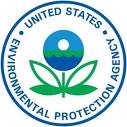You are here
Ragweed and Future Climate Change: Putting the Where and When on Wheezing
Harvard Forest ecologists Kristina Stinson and David Foster, in collaboration with Dr. Chris Rogers from the University of Massachusetts School of Public  Health, have been awarded $1M from the US Environmental Protection Agency to study the effect of global change on ragweed and human health. The researchers' primary objective will be to determine where and when ragweed pollen production changes with major shifts in atmospheric carbon dioxide and seasonal precipitation. Common ragweed, the main cause of hay fever nationwide, dramatically increases its pollen production when exposed to increased atmospheric carbon dioxide. This new research project will assess the response among different ragweed ecotypes from NY to Maine to a host of climate-related changes. The researchers will install a series of pollen traps near study populations of ragweed to determine how geographic variation in plant growth, abundance and peak flowering time relate to volume of pollen output and allergic potency. In addition, a large experiment will be installed at the Harvard Forest to test ecotype responses to simulated increases in carbon dioxide and changes in seasonal rainfall. Using these data, Stinson and her colleagues will generate regional models and maps of ragweed "hotspots" across a spectrum of future climate change scenarios. These data draw upon the researchers' collective expertise in plant-climate interactions, population biology, and air quality to advance our theoretical understanding of population-level responses of plants to climate change. At the same time, the resulting data and maps will contribute the most accurate predictions to date for allergen hotspots in this region or elsewhere - a boon for public health officials and allergy sufferers who hope to strategize for the long term.
Health, have been awarded $1M from the US Environmental Protection Agency to study the effect of global change on ragweed and human health. The researchers' primary objective will be to determine where and when ragweed pollen production changes with major shifts in atmospheric carbon dioxide and seasonal precipitation. Common ragweed, the main cause of hay fever nationwide, dramatically increases its pollen production when exposed to increased atmospheric carbon dioxide. This new research project will assess the response among different ragweed ecotypes from NY to Maine to a host of climate-related changes. The researchers will install a series of pollen traps near study populations of ragweed to determine how geographic variation in plant growth, abundance and peak flowering time relate to volume of pollen output and allergic potency. In addition, a large experiment will be installed at the Harvard Forest to test ecotype responses to simulated increases in carbon dioxide and changes in seasonal rainfall. Using these data, Stinson and her colleagues will generate regional models and maps of ragweed "hotspots" across a spectrum of future climate change scenarios. These data draw upon the researchers' collective expertise in plant-climate interactions, population biology, and air quality to advance our theoretical understanding of population-level responses of plants to climate change. At the same time, the resulting data and maps will contribute the most accurate predictions to date for allergen hotspots in this region or elsewhere - a boon for public health officials and allergy sufferers who hope to strategize for the long term.

